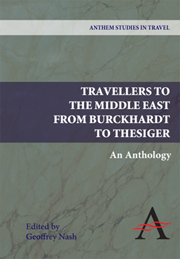Book contents
- Frontmatter
- Contents
- Acknowledgements
- Introduction
- PART ONE THE COMING OF EMPIRE 1800–1879
- PART TWO COLONIALISM AND RESISTANCE 1880–1950
- Ottoman and Former Ottoman Territories
- Arabia
- Persia/Iran
- 1 Persia and the Persian Question
- 2 A Year Amongst the Persians
- 3 Persian Letters
- 4 The Middle East Question
- 5 The Road to Oxiana
- 6 The Cruel Way
- Bibliography
4 - The Middle East Question
from Persia/Iran
Published online by Cambridge University Press: 05 March 2012
- Frontmatter
- Contents
- Acknowledgements
- Introduction
- PART ONE THE COMING OF EMPIRE 1800–1879
- PART TWO COLONIALISM AND RESISTANCE 1880–1950
- Ottoman and Former Ottoman Territories
- Arabia
- Persia/Iran
- 1 Persia and the Persian Question
- 2 A Year Amongst the Persians
- 3 Persian Letters
- 4 The Middle East Question
- 5 The Road to Oxiana
- 6 The Cruel Way
- Bibliography
Summary
The DNB tells us that although he was of French Huguenot descent ‘and brought up in France and Germany, Chirol was a staunch English patriot, proud of his Anglo-Saxon Ashburnham [his mother's family] blood.’ It was not until the Franco-Prussian War broke out that he and his mother resettled in England. Though trained as a barrister the young Chirol spent four years in the Foreign Office before turning to travel: he visited Egypt, Syria, Lebanon, and in 1880 Istanbul where he took up journalism. In 1882 he reported Wolseley's campaign against Urabi in Egypt for the London Standard, went to India and Persia (1884), and reported the events of 1885 in Sudan. Through his good connections he joined the newly opened Times foreign news department in 1891. After a spell as Berlin correspondent during which he became disillusioned with German politics, he returned to his desk at the Times where he was appointed foreign editor in 1899. It was while in this highly influential post that Chirol wrote The Middle East Question. Together with David Fraser, another journalist who worked under him at the Times, he helped promote what would now be considered a ‘realist’ line in which Britain's foreign policy interests were held to override the aspirations of Eastern nationalisms such as those of Persia and Turkey (Nash 2005: Ch 4).
- Type
- Chapter
- Information
- Travellers to the Middle EastAn Anthology, pp. 275 - 279Publisher: Anthem PressPrint publication year: 2009



